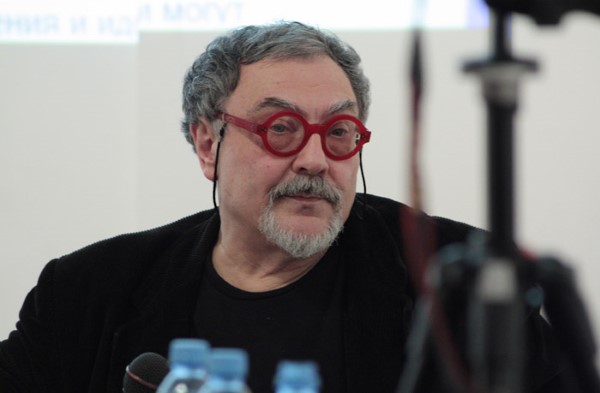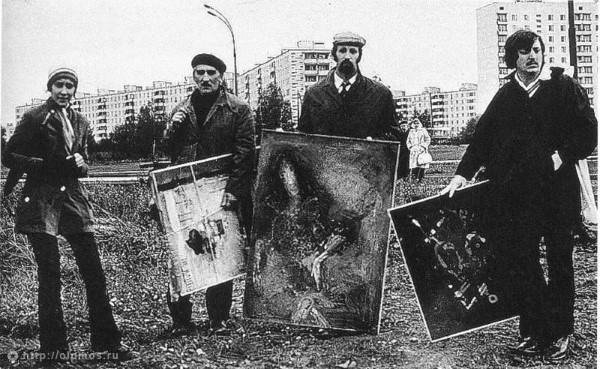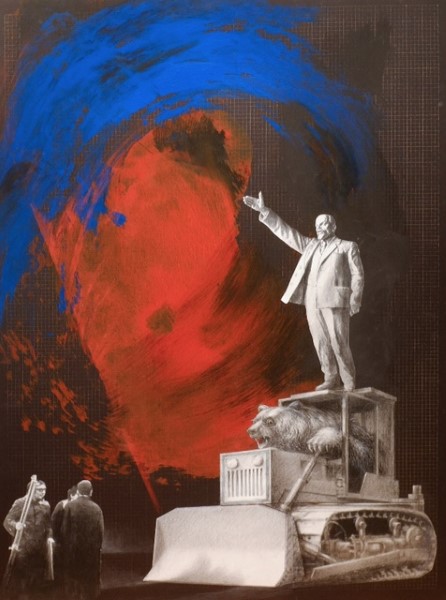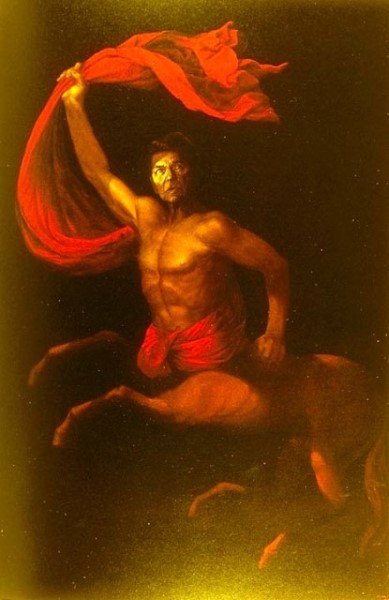Artists Komar and Melamid were the most significant duo in the Era of Stagnation: they were hated (and secretly admired) in the Soviet Union and adored in the West; they invented Sots Art and were the visionaries behind the “Bulldozer Exhibition” in 1974. Vitaly Komar, former “artist-slash-troublemaker,” has lived in New York City for a long while, and without knowing his personal history, one could never take him for an immigrant.
Russkiy Mir continues the series of interviews with talented people who are living abroad and linked to the Russian or Russian-speaking culture.
Vitaly Komar
You once called yourself a “conceptual eclecticist” in an interview. Could you elaborate on that?
“Conceptual eclecticism” is the evolution of the early Sots Art, deliberately mirroring the mishmash of ideas in my head—and not only mine.
Conceptual eclecticism is when I—among others—profess love for very different styles of art at the same time, from Greek classics to medieval icons, from Renaissance to Impressionism, and so on. Just like laughter and tears, science and superstition, our consciousness is a cocktail of contradicting concepts, traditions and emotions. Long before Postmodernism, we stopped seeing the difference between synthesis and eclecticism.
Read also:
Terminology is a rather deceptive thing. Take the term “avant-garde”: it can be used in peculiar ways 100 years after its conception. The same can be said about underground art. Do you agree with that? And what should we do with those labels?
I can’t help but agree that today even cultured people can confuse the term “avant-garde” with Modernism or even Abstract art, the latter being, strictly speaking, not a style but a new genre. Avant-garde is about striving to shift established tastes. Different styles and movements can be avant-garde in different eras. For instance, in the period of late Gothic art, early Renaissance artists were avant-garde. I think that, taken in this context, it’s better to call our underground art “postwar avant-garde,” dating it to a specific stretch of history.
“The Bulldozer Exhibition,” 1974
How much of Sots Art’s popularity can be attributed to you and Melamid “exporting” it to the West? Could everything turn out differently if you stayed in the Soviet Union?
The first people to popularize Sots Art were the members of the Soviet authorities who trashed our exhibition with bulldozers and destroyed many artworks in 1974, with the whole world watching. As for things turning out differently, that reminds me of another question: Would Bryullov paint The Last Day of Pompeii or would Gogol write Dead Souls if they didn’t live and work in Rome? There are no ‘what-ifs’ in the past.
What event in the Soviet history would you interpret as an act of conceptual art—or performance art?
The Soviet regime was based on ideology, which made the USSR a conceptual state. By late 1920s-early 1930s the Russian avant-garde was no longer the new government’s official art; it was banished from the museums and into the streets. There, in the street, avant-garde endured in the era’s established forms—in red slogans of the agitprop and visual propaganda; in street demonstrations and celebratory performances on Red Square. As Mayakovsky once said, “Streets are our brushes, squares our palettes!”
I see those red rectangles with appeals-slash-incantations, those white texts with white exclamation points as innovations of the “state conceptualism.” That is, with Social Realism in museums and at exhibitions, the “official art of Social Conceptualism” co-reigned in the streets. It was that enduring branch of the Russian avant-garde that inspired our early Sots Art.
Sketch of the monument to the “Bulldozer Exhibition,” 2014
You have lived in the US most of your life. Do you think there is correlation between immigration waves and the art that newcomers have tried to bring to the American market?
There have always been talented youth in Russia. But for the last 25 years, new generations of Moscow artists are shaped by an environment close to South American capitalism. The traditions of romanticizing crime are pernicious. Their outbursts tend to rob artists of self-criticism, self-reflection and self-irony.
In that environment, to be patriotic means not to love one’s nation and its traditions, but rather to be intolerant of other nations’ traditions. I cannot comprehend why such artists would seek success in the West. Why seek recognition from people whose tastes and opinions you have no respect for? Unlike those from the newer immigration waves, I still idealize the North American social model, with all its (and mine) weaknesses and strengths. Of course, the Western art market should be criticized, but, in today’s world, there is still nothing better than that.
You would probably agree that Soviet symbols are fertile ground for art experimentation. Like in your project “New Symbolism” where the epoch didn’t create its symbols, it was the other way round: symbols invented by artists functioned as some kind of simulacra. Can you imagine yourself living in another era and reflecting it, or do you consider the historical “point of existence” irrelevant?
When I was 13-15 years old, I loved reading yellowed pre-revolutionary magazines and I sometimes wished I could live among the people of the Silver Age. But every time I remembered how terrible their deaths were, my philosophizing cooled off.
I have a dream of making an exhibition of Russian artists from different eras, a small one, very dense from a conceptual point of view. I can knowingly select the works predating visual dualism and reflecting the dialectics of the Eastern and Western traditions. Some kind of conceptual eclecticism of the Eurasian art. It could be called “The Origins of Russian Postmodernism.” Art lovers across the world are aware of the origins of Nihilists or Russian avant-garde pioneers. However, nothing but the exhibition I’m talking about can make the pioneers of the Russian Postmodernism known to the public.
Portrait of Ronald Reagan as a Centaur, 1980/81
Today’s art is intellectualized to a fault; visuals are often less important than concepts. What are the reasons for that?
In Western galleries all extremes are welcome, be they visual or conceptual. Surely, every market has dictatorial ambitions, but if, say, wines from Australia or Slovenia are all the rage, it doesn’t mean that the market made people give up beer or apple juice. Galleries differ, as do tastes. Be careful, though: if you need rare wine, you won’t find it in a furniture store.











